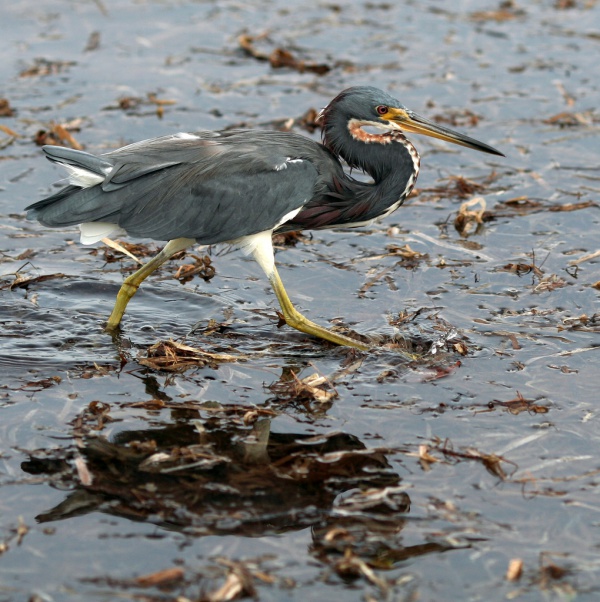Facts About Tricolored heron
The tricolored heron, previously known as the Louisiana heron, is a charming bird found in coastal regions across the Americas. Its range extends from the northeastern United States along the Atlantic coast down to Brazil, and from Peru up to California along the Pacific coast. These birds prefer to nest in swamps and coastal zones, often forming colonies with other heron species. They build their nests out of sticks in trees or shrubs and typically lay between three to seven eggs.
These herons are relatively small, measuring about 56 to 76 cm in length with a wingspan of around 96 cm. They have long necks and legs, a pointed bill with a black tip, and dark-colored legs and feet. Adult tricolored herons display a blue-grey head, neck, back, and upper wings, accentuated by a white line along the neck and a white belly. During the breeding season, they become even more striking with long blue plumes on their head and neck, as well as buff-colored plumes on their back.
Their diet mainly consists of fish, crustaceans, reptiles, and insects. They hunt by stalking their prey in both shallow and deeper waters, often running to catch it. This medium-sized heron stands out with its unique physical traits and dynamic hunting behavior, playing a vital role in the ecosystem of its coastal habitats.
